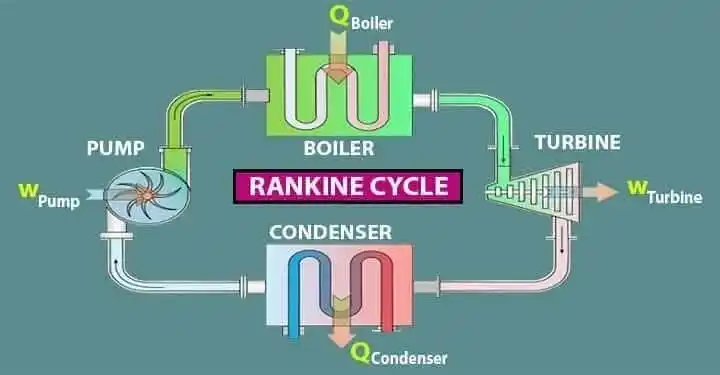
HVAC Technical Support
June 5, 2025 at 09:02 AM
The Rankine cycle is a fundamental thermodynamic process used in power plants to convert heat energy into mechanical work, which subsequently generates electricity. It consists of four main components: a boiler, turbine, condenser, and pump. In the boiler, heat energy (Q_boiler) is added to water, converting it into high-pressure steam. This steam expands through the turbine, producing mechanical work (W_turbine) as it drives the generator. Afterward, the steam enters the condenser, where heat is removed (Q_condenser), causing the steam to condense back into liquid water. The pump then pressurizes this water and circulates it back into the boiler, completing the cycle. The Rankine cycle's efficiency and simplicity make it a widely used model for steam power generation.
